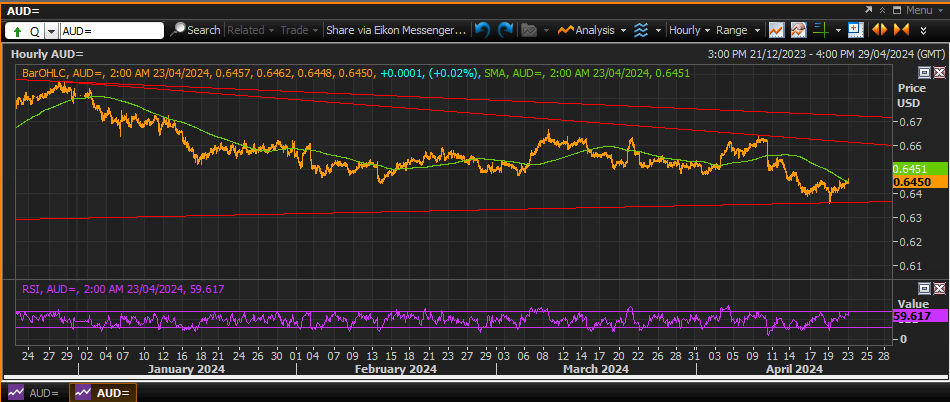Australian markets are bracing for more volatility on Wednesday as the Australian Bureau of Statistics releases the latest Consumer Price Index (CPI) data. The data for the last quarter is expected to show an increase to 0.8% from 0.6%, with the trimmed mean rising to 0.9% from 0.8%. The year-on-year number is expected to decrease to 3.4% from 4.1%, and although this is obviously a big step in the right direction towards the Reserve Bank’s 2-3% target range, it is still not quite there. It is unlikely that these results will push the RBA into an early cut, which many households have been hoping for.
At the moment, the market is pricing in an initial cut in rates in November this year. However, there are some economists who still see the potential for the next move being a rise, as jobs data continues to prove resilient and real wages push higher. Looming tax cuts should also add to an increase in disposable income, which could put more pressure on the bank to increase rates in stark contrast to most of the other major central banks.
All these factors are adding to the importance of this week’s CPI print, as inflation is clearly the focus for the RBA at the moment. The Aussie dollar has been under pressure in recent weeks, reaching 0.6360 on Friday, its lowest point in 2024, as the US dollar has appreciated across the board with a more hawkish Federal Reserve Bank and risk appetite pulled back in global markets. It has bounced back over the last few trading sessions, but if we see a print below the expected results, then we could see those levels challenged swiftly as pressure pulls back from the RBA. Conversely, if, as some fear, inflation remains sticky and the hopes for a cut are pushed out later in the year or flip to a rise, then expect the Aussie to rally strongly and challenge initial resistance levels near 66 cents in short order.






